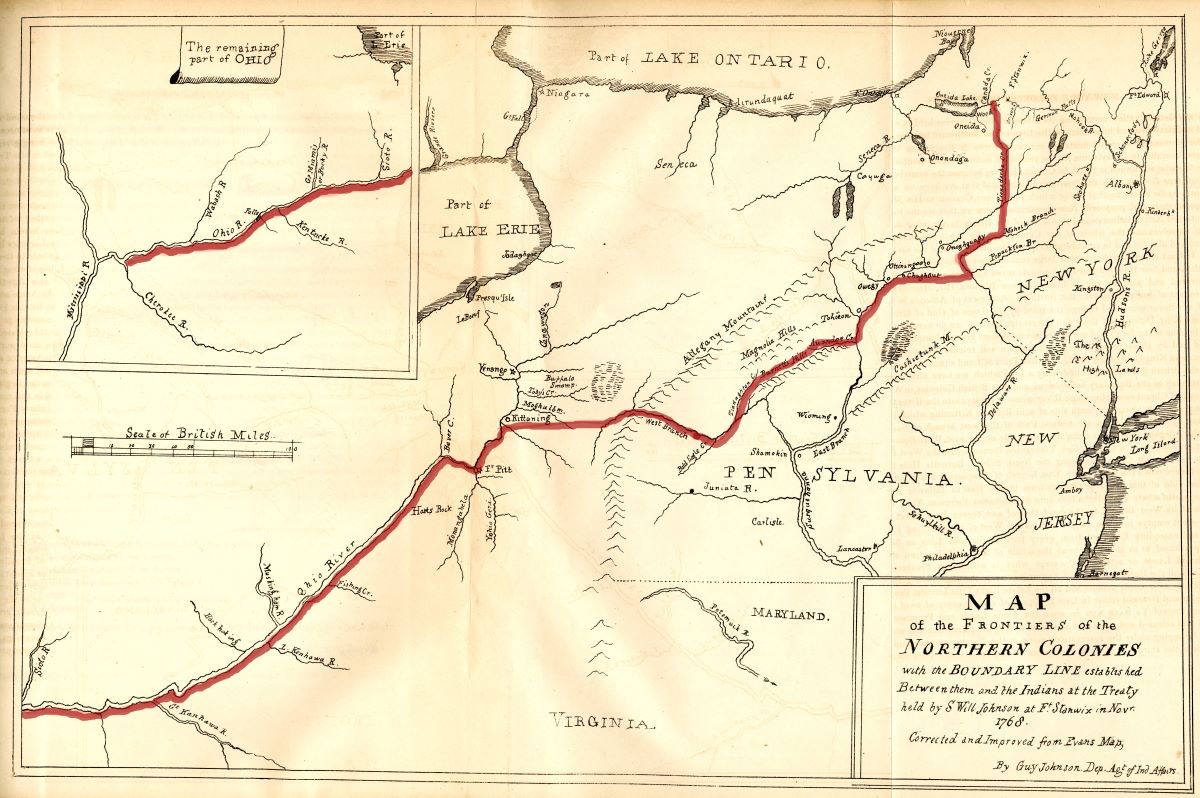Map of the Treaty of Fort Stanwix, 1768

Annotation
In 1768, Sir William Johnson received permission from the British Crown to hold a treaty council with the Iroquois Confederacy and its dependents in order to establish a more official and lasting boundary line without French pressures. A clear boundary line between the Indians and Europeans would prevent colonial encroachments on Indian lands and minimize violence between the two parties. As such, the Treaty of Fort Stanwix resulted in massive cessions of Indian lands, however the Iroquois still managed to divert English attention from their ancestral lands in New York by selling off their last claims in the Ohio country. Though this was done at the expense of the Confederacy’s tributary tribes like the Ohio Delawares, the Shawnee, and other western Indian nations, the Iroquois succeeded in maintaining their sovereignty in the eyes of the English. The results of this negotiation were noted by Guy Johnson of the Department of Indian Affairs, who corrected and improved a previous map of the backcountry. For ease, the boundary line established at Fort Stanwix has been marked in red.
This source is a part of the Treaties between the Iroquois Confederacy and English Colonies in the 18th Century teaching module.
Credits
Guy Johnson, Map of the Frontiers of the Northern Colonies with the Boundary Line established Between them and the Indians at the Treaty held by S. Will. Johnson at Ft. Stanwix in Novr. 1768, in William N. Fenton, The Great Law and the Longhouse: A Political History of the Iroquois Confederacy (Norman: The University of Oklahoma Press, 1998), 538.